Preventing a blood clot whilst you are in hospital
Information for patients from the Trust Thrombosis Group
This leaflet discusses the risks of having a blood clot whilst you are in hospital. It outlines what you and your doctor can do to reduce this risk.
What are deep vein thrombosis (DVT) and pulmonary embolism (PE)?
Deep vein thrombosis (DVT) is the name given to a blood clot which forms inside a vein. It usually develops in the deep veins of the leg, and blocks the flow of blood. This can cause the leg to become painful and swollen.
Pulmonary embolism (PE) occurs when a fragment of blood clot in a leg breaks loose. It then becomes lodged in a blood vessel in the lungs. This is a potentially serious condition. It can cause pain, breathlessness, and a lack of oxygen in the blood.
Together, deep vein thrombosis and pulmonary embolism is known as venous thromboembolism or VTE.
Am I at risk of developing VTE whilst in hospital?
As part of your admission to hospital your healthcare professional will consider a series of questions. These questions are about factors that are linked with the development of VTE.
Questions they may ask you
Are you aged over 60 years?
Are you overweight?
Do you have cancer?
Are you pregnant?
Are you taking the contraceptive pill or hormone replacement therapy (HRT)?
Have you had venous thrombosis in the past?
Are you known to have a clotting tendency (thrombophilia)?
Has anybody in your close family had venous thrombosis?
Do you have any kidney diseases, such as the nephrotic syndrome?
Do you have any bowel disorders, such as inflammatory bowel disease (IBD)?
What can I do to reduce my risk of developing VTE?
Try to do the following before your planned admission to hospital.
Eat a balanced diet and keep well hydrated by drinking plenty of water.
Keep mobile, move around as much as possible in the weeks before your surgery.
Take care on journeys. If you can, avoid uninterrupted journeys of over three hours in the month before your surgery.
If you do need to make a long journey, try to move your legs regularly. If travelling by car, take a break and walk around every two hours.
Talk to your doctor if you are taking the contraceptive pill or HRT. These medicines may increase your risk of DVT or PE.
What happens when I arrive at the hospital?
Your clinical team will assess your risk of VTE. The team will discuss with you what will be done to reduce your risk of developing a VTE.
The risk assessment will be done as soon as possible after you come into hospital. If you are having a planned procedure, it will be done at your pre-assessment appointment.
The nurse or doctor carrying out the assessment will ask you about all the risk factors listed above. These are your individual risk factors.
They will also look at:
the nature of your current illness
how long you are likely to be in hospital; and
whether you will be having any surgery.
The type of surgery you have will also determine the treatment you have to reduce your risk of VTE.
What treatment will I have to reduce my risk of VTE?
The treatments recommended for you will depend on the result of your risk assessment. Your doctor will discuss your options with you before any treatment begins. These may include the following.
Medication
You may be given medicine to stop your blood from clotting too quickly. These are called anticoagulants. You may be treated with:
heparin injections, such as enoxaparin; or
anticoagulants taken in tablet form, called rivaroxaban or apixaban.
For patients already taking an anticoagulant, such as warfarin. Your doctor will talk to you about what anticoagulation treatment is suitable for you while you are in hospital.
Some heparins contain animal products. If you are concerned about having animal products, please let your doctor know.
Anticoagulants can increase your risk of bleeding. Please discuss with your doctor what to look out for.
Special stockings
These are called anti-embolism stockings (AES). They reduce the risk of DVT by reducing swelling and preventing blood from collecting in the veins.
Anti-embolism stockings are not recommended for people who have:
poor circulation (peripheral vascular disease)
loss of feeling in their lower legs (neuropathy)
leg ulcers
had a recent skin graft
extreme deformity of their legs
very swollen legs; or
have had an acute stroke.
Let staff know if you have any skin allergies.
How are anti-embolism stockings fitted in hospital?
AES should be fitted, so before wearing stockings staff should take your measurement for below knee stockings and thigh measurement if measuring for thigh length stockings.
Measuring for correct stocking size
-
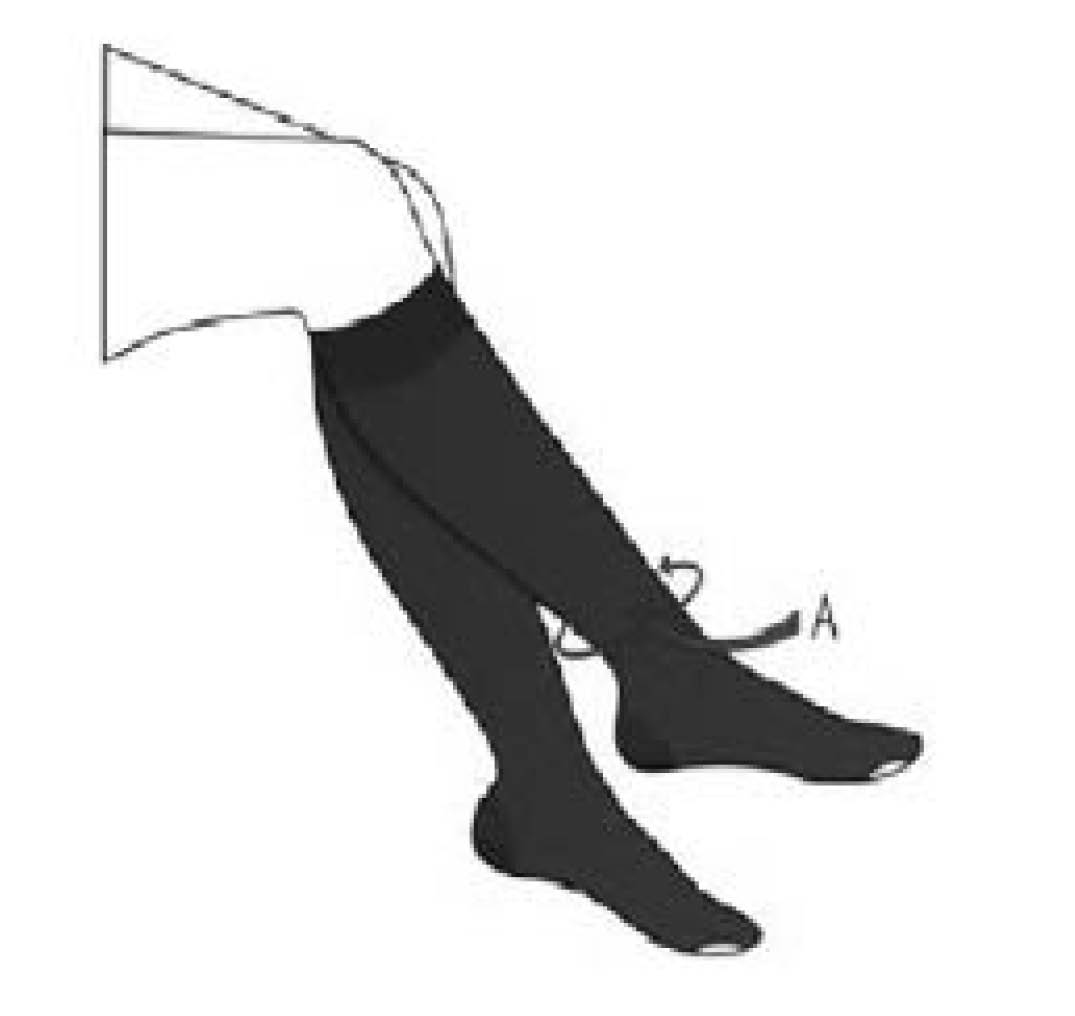 Around your ankle (below knee stockings)
Around your ankle (below knee stockings) -
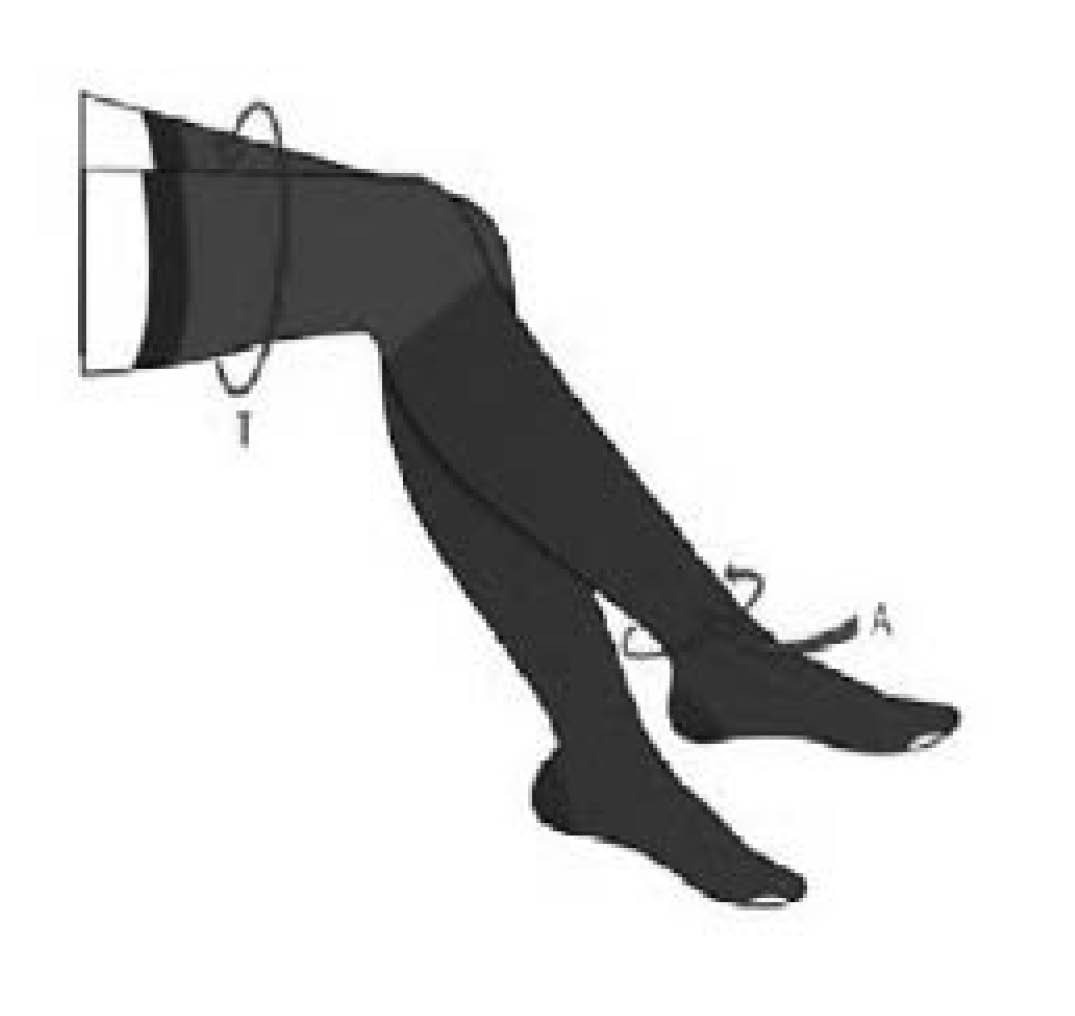 Around your upper thigh (thigh length stockings)
Around your upper thigh (thigh length stockings)
How do I put my stockings on?
Check the stocking is not inside out.
Insert your hand into the stocking as far as the heel pocket.
Firmly grasp the centre of the heel pocket. Keeping hold of the heel, turn the stocking inside out to the heel area.
Grasp the excess stocking at the front of your foot.
Put the stocking over your ankle and ease the fabric up your leg. Do not drag the stocking against your skin (steps 1 to 4 below).
-
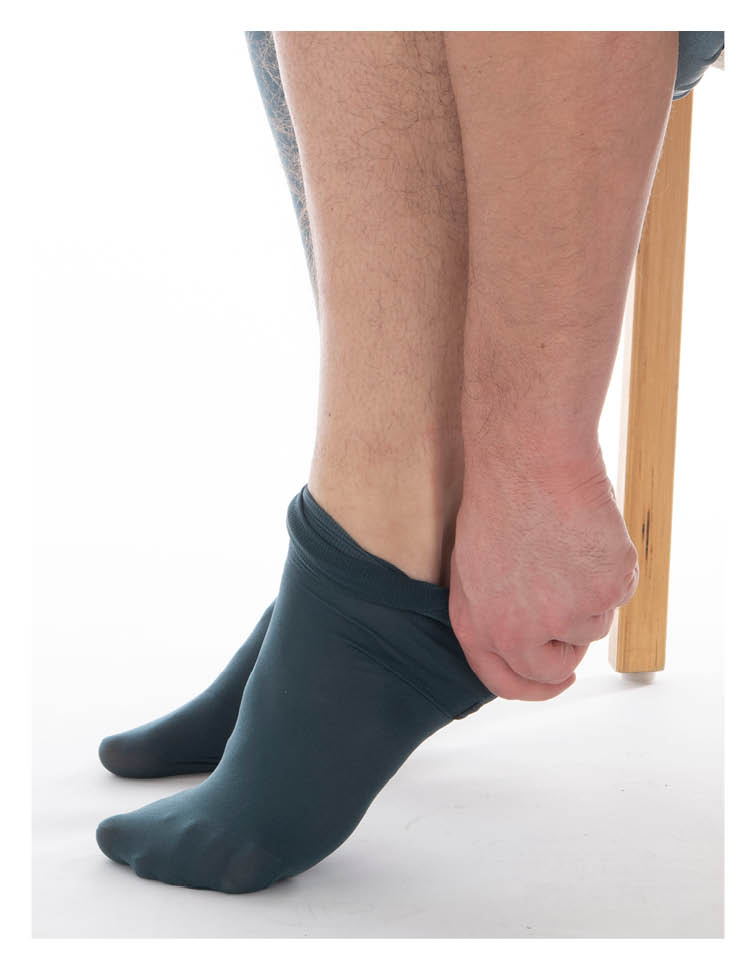 Step 1
Step 1 -
 Step 2
Step 2 -
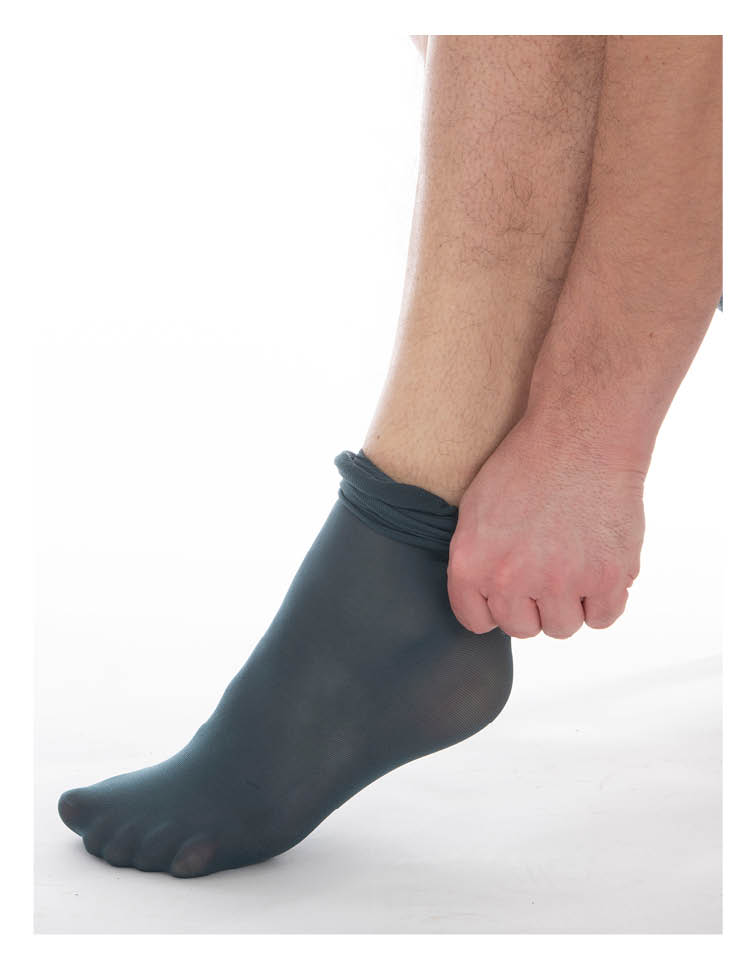 Step 3
Step 3 -
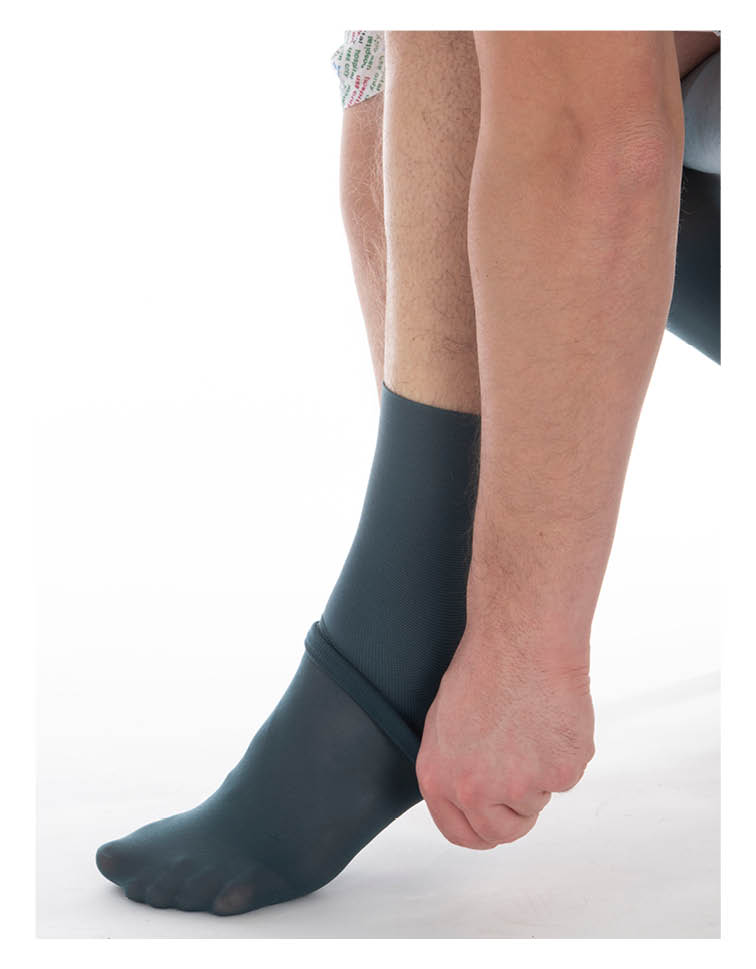 Step 4
Step 4
Pull the open toe section of the stocking forward. Doing this will smooth out any excess material causing creases at your foot.
Make sure your toes are covered. The open section should be comfortably placed under your toes.
Do not push your toes through the open toe area.
-
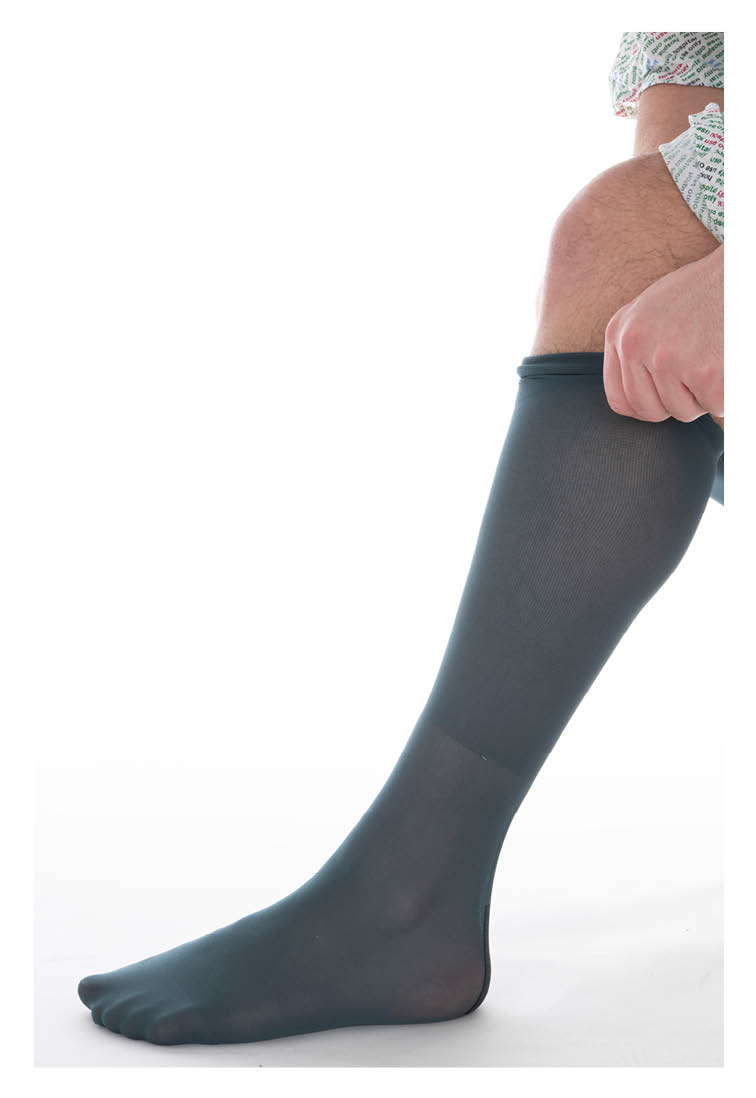 Step 5
Step 5 -
 Step 6
Step 6 -
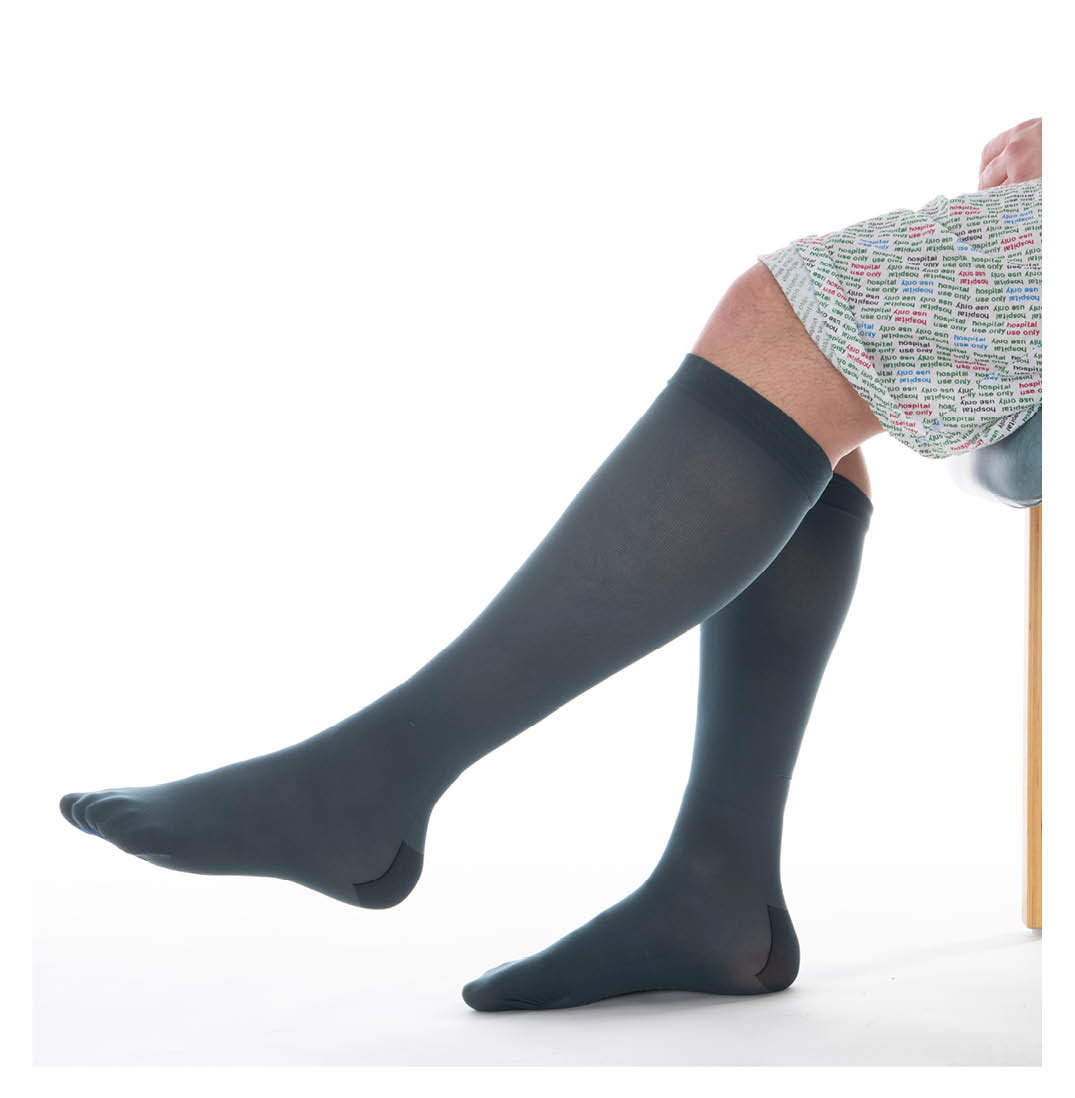 Step 7
Step 7
Pull the stocking up over your calf. Make sure you smooth out any wrinkles that appear, and that the band at the top is smooth and not rolling over.
Make sure the stocking finishes two fingers width down the back of your knee joint. This is important for blood flow.
It is important not to roll the stocking down your leg or to fold the toe section back on itself. This can reduce the blood flow in your legs and put you at risk of developing a blood clot in your leg.
Special points to note about your stockings
Wear your stockings throughout the day and night to be most effective.
Remove your stockings daily. When removed, you can wash your skin and check your heels and other pressure points for sore or broken areas. Do not leave them off for longer than 30 minutes, as this may reduce their effectiveness.
Make sure that your stockings are wrinkle free and not rolled down, as this may restrict the blood supply to your leg.
Do not apply oil products to your legs, as they may damage the fabric of the stockings. Use emollients such as aqueous cream if your skin is very dry, but you must make sure it is well rubbed in. Emollients are moisturising treatments added directly to the skin to soothe and hydrate it.
Tell a member of staff immediately if you experience any of the following in your legs whilst wearing the stockings.
Tingling
Numbness
Pain
Blistering
Redness.
How do I remove my stockings?
Pull down from the top of the stocking, down your leg and then over your heel and foot. This will leave the stocking inside out. Turn the stocking back to its right side before refitting.
Foot or leg pumps
These are called intermittent pneumatic compression (IPC). They reduce the risk of DVT by gently compressing your leg. This increases blood flow and stops blood pooling in your leg to create clots.
IPC sleeves are not recommended for people who have the following.
Acute or suspected DVT or PE
Severe peripheral vascular disease
Severe skin problems on their legs
Massive oedema of the legs or pulmonary oedema from congestive heart failure
Peripheral neuropathy
Unusual leg size, shape, or deformity preventing a correct fit.
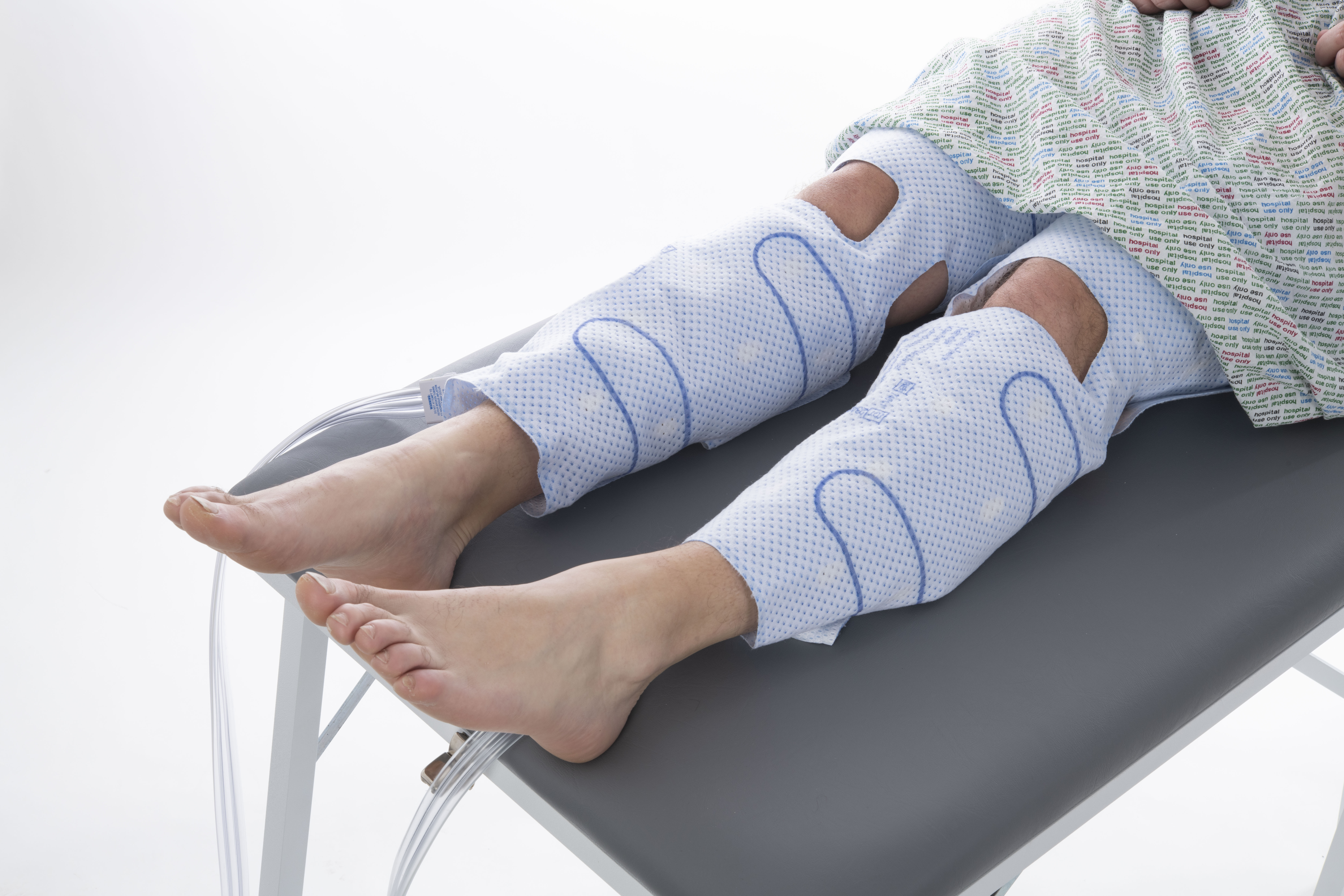
Your legs should be measured before fitting, to make sure the correct size sleeves are used. The sleeve should fit snugly round your leg or foot but you should still be able to get two fingers under it.
Special points to note about foot or leg pumps
Sleeves should be worn 24 hours a day.
Sleeves should be removed daily for bathing and to check your skin.
Please check your sleeves are inflating regularly and are not switched off.
Let staff know if the sleeve feels too loose or too tight.
Tell a member of staff immediately if you experience any of the following in your legs whilst wearing the sleeve.
Tingling
Numbness
Pain
Blistering
Redness.
How can I help myself while in hospital?
Try to move around as much as possible while in hospital. This is particularly important after surgery.
Do not sit or lie with your legs crossed. If possible, make a point of wriggling your feet regularly.
Do not become dehydrated. Please ask your nurse about how much you should be drinking.
What should I do when I return home?
The length of time you need to continue taking anticoagulants after you go home, will depend on your risk factors and whether you have had surgery. For most patients who have not had an operation, their medication will stop when they are well enough to leave hospital.
If you need to continue heparin injections after leaving hospital you may be able to do this for yourself. If not, we will arrange for the district nursing service to do it for you. Your doctor or nurse will discuss this with you. Please let them know if there is anyone at home who can help you with the injections.
What symptoms of DVT and PE should I look out for? What should I do if I get them?
Symptoms of DVT
Swelling of the affected leg.
Pain in the affected leg, which may be worse when standing or walking. Usually the pain is worse in the back of the leg.
Symptoms of PE
Sudden chest or shoulder pain, which is made worse by taking a deep breath.
Breathlessness.
Coughing with blood streaked sputum.
In the unlikely event that you have any of these symptoms, you should ask for medical advice immediately.
Who can I contact for more information?
If you would like more information, please ask any nurse or doctor.